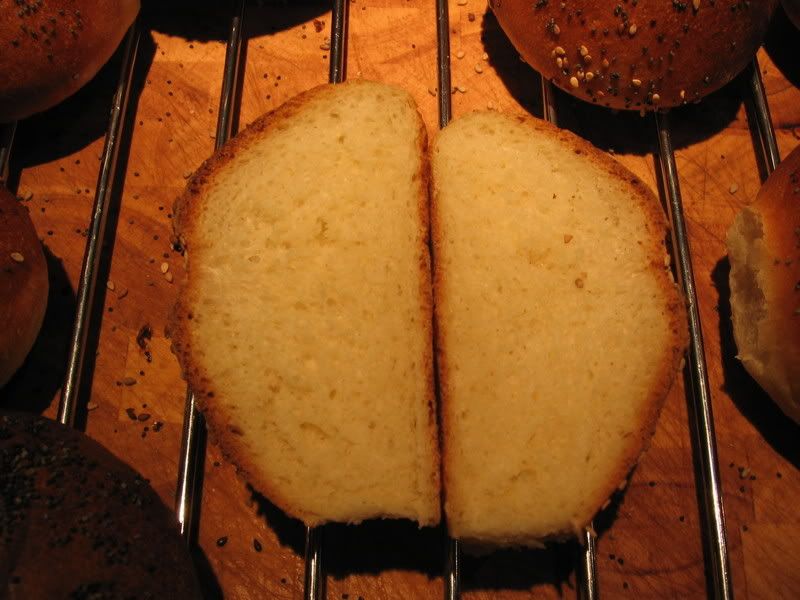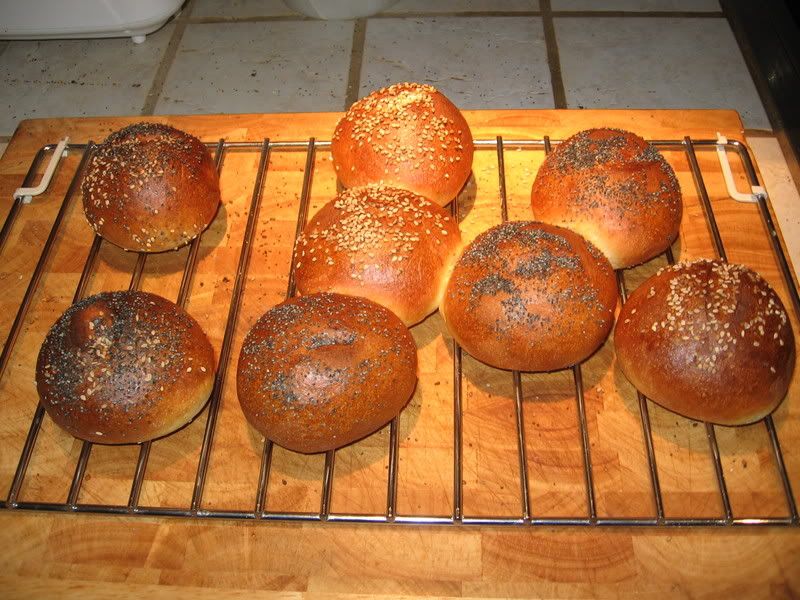(M) Sorry, James if this is slightly off topic since it isn't likely that many (other than Jim Wills) will bake rolls in a masonry oven but I'd like input from any experienced bakers who might be able to provide some input.
(M) CanuckJim knows that I've been trying for some time to make a true German Hard Roll known by several names; Broetchen, Schrippe, Semmeln, ..
(M) The rolls I've baked taste good but have too refined a texture. I'm looking for what in a roll would be called al dente in a pasta, i.e. something chewy and more like a baguette.
(M) I'll try to post 2 images from my latest attempt and hope that you can see that the crust is correctly crisp. You won't be able to tell much from the view of the interior:


The recipe I used follows:
INGREDIENTS:
DIRECTIONS:
(M) CanuckJim knows that I've been trying for some time to make a true German Hard Roll known by several names; Broetchen, Schrippe, Semmeln, ..
(M) The rolls I've baked taste good but have too refined a texture. I'm looking for what in a roll would be called al dente in a pasta, i.e. something chewy and more like a baguette.
(M) I'll try to post 2 images from my latest attempt and hope that you can see that the crust is correctly crisp. You won't be able to tell much from the view of the interior:


The recipe I used follows:
INGREDIENTS:
- 15 Oz. Bread Flour (About 12% protein)
- 00.5 Oz. Gluten flour
- .2 Oz yeast
- .2 Oz sugar
- .2 Oz salt
- 8 Oz. water @ 100 F
- 1 Oz. Unsalted Butter (Is the butter the problem?)
DIRECTIONS:
- 1- Add warm water, sugar, and yeast to bread maker machine container.
- 2- Add other dry ingredients.
- 3- Set bread machine to "dough" setting = #9
- 4- After 1 hour 30 Min. cover container with plastic wrap and place in refrigerator overnight.
- 5a - The next day sprinkle heavy cookie tray with Semolina flour and shape 10 dough rolls after weighing to about 80 g each.
- 5b - Preheat oven to 425 F.
- 6- Knead each roll firmly with thumbs, press Kaiser star former deeply into each dough ball and place star side DOWN on the tray.
- 7- After almost doubling in bulk in a warm place, turn each roll to show star, brush with egg white & water mixture.
- 8- Sprinkle rolls with poppy seeds &/or sesame seeds.
- 9- Just prior to placing tray in the oven, set control to Radiant Bake and spray the oven sides with about 4 squirts of water.
- 10- Bake for about 17 minutes. Spray, again after 3 minutes. Close oven door and don't peak.





 aber, ... das innere; das fehlt
aber, ... das innere; das fehlt 
Comment